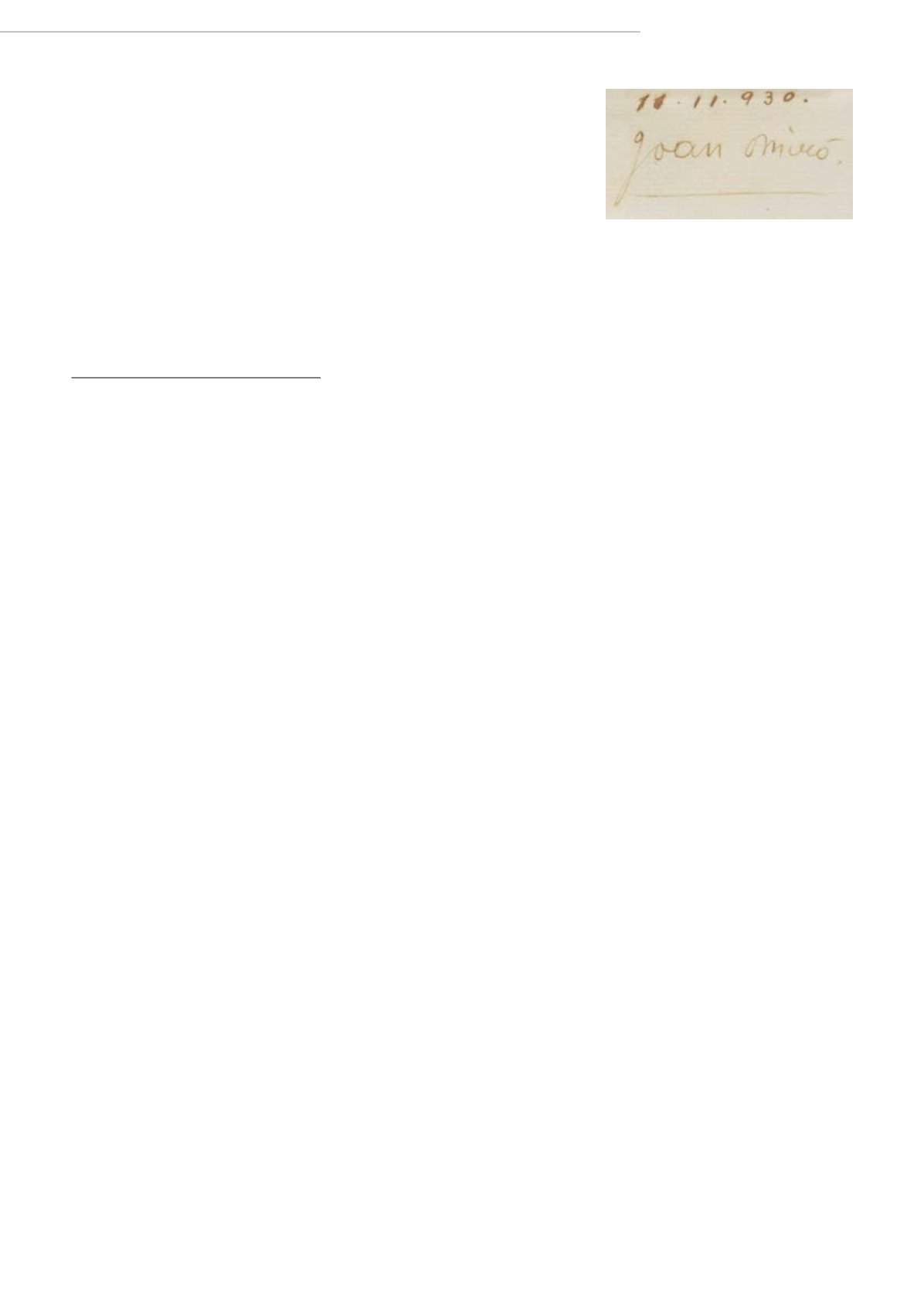

Impressionist & Modern Art
| 50
3237 JOANMIRÓ(Montroig, Barcelona 1893 - 1983 Palma
de Mallorca)
Untitled. 1930.
Pencil on paper.
Dated and signed on the reverse:
11.11.1930 Joan Miró.
46 x 62 cm.
Provenance:
- Galerie Berggruen, Paris.
- Waddington Galleries, London.
- Forum Fine Art-Jacqueline Krotoschin,
Zurich.
- Private collection, Zurich.
Literature:
- Colombia, Victoria: Picasso-Miró. Miradas
cruzadas, Electa, Madrid 1998 Pl. 82, p.
96.
- Dupin, Jacques/Lelong-Mainaud Ariane:
Joan Miró. Catalogue raisonné: Drawings
1901-1937, Paris 2008, vol. I, no. 348, p.
170-171 (with ill.).
Miró saw through a fundamental change in
style and temporary shift to the Surrealists
in the 1920s. In this he was strongly influ-
enced by Paul Klee’s works and the bold
and organic forms of Hans Arp.
Miró developed his own, somewhat naive
and distinctive pictorial language, which is
greatly imbued with symbols and figurative
pictographs, and which make his painting
so unique. Miró spent the summer and
part of the autumn of 1930 in Spain in the
town of Montroig. Here he created two
contrasting series of works: one, a series
of wooden sculptures and the other, a
series of several pencil drawings, to which
the present work on paper belongs. In a
letter to his friend Sebastiá Gasch, Miró
wrote: "I amworking very hard, and it is a
shame it won't be possible for me to show
you all these sculptures... but on the other
hand, you will see the very large series of
drawings which will also be something very
important". ( Joan Miró, Exh. Cat., New
York, 1993, p. 328).
The striking simplicity and purity of form
are indicative not only of Miró’s talent in
drawing, but also provide insight into the
artistic genius. The surreal form is execu-
ted with a perfect stroke of the pencil and
yet the effect of the drawing is light and
carefree.
The friendly face appears to smile at
the viewer and reflects Miró’s wellbeing,
having recently married his great love Pilar
Detail reverse
Juncosa. Often Miró chooses a restrai-
ned artistic approach in his works by
reducing them to black forms and in this
case concentrating on pencil. Many of the
works in this series show female figures or
couples. In the present work Miró’s popular
and much-used symbols also reappear.
The eye is a symbol of sexuality and desire,
probably with reference to his wife. Equally
the bird, which Miró sees as the mainspring
of his creative potential. The lightness,
which is lost in Miró’s later work with the
outbreak of the Spanish civil war, lends our
sheet a positive and carefree quality, which
is characteristic of early Miró.
CHF 60 000 / 90 000
(€ 55 560 / 83 330)


















